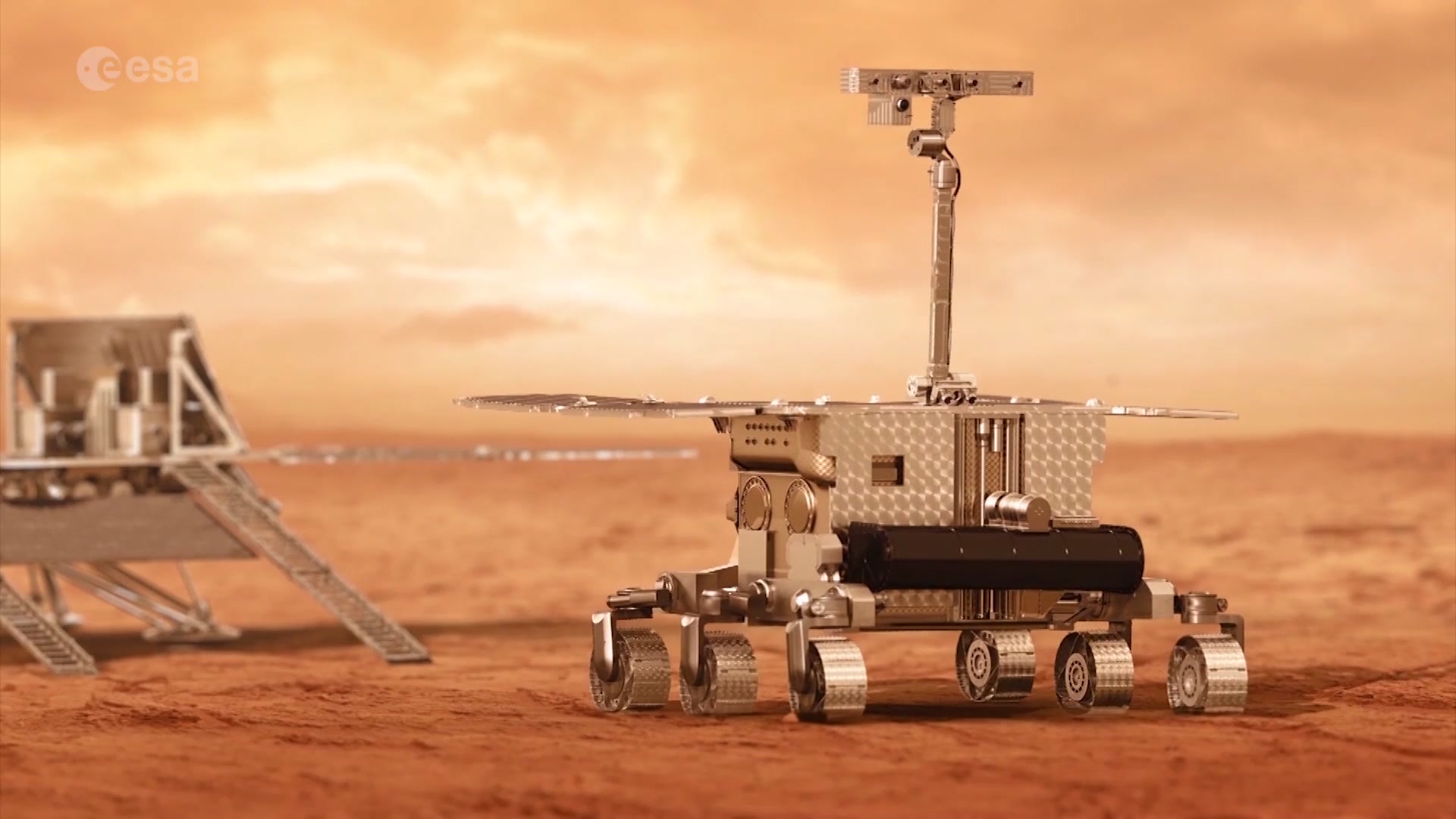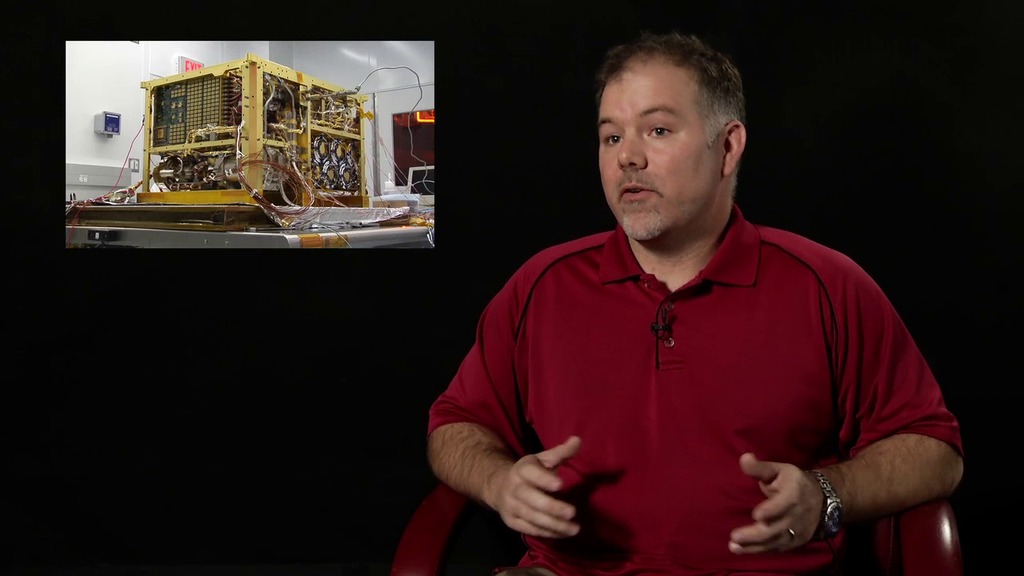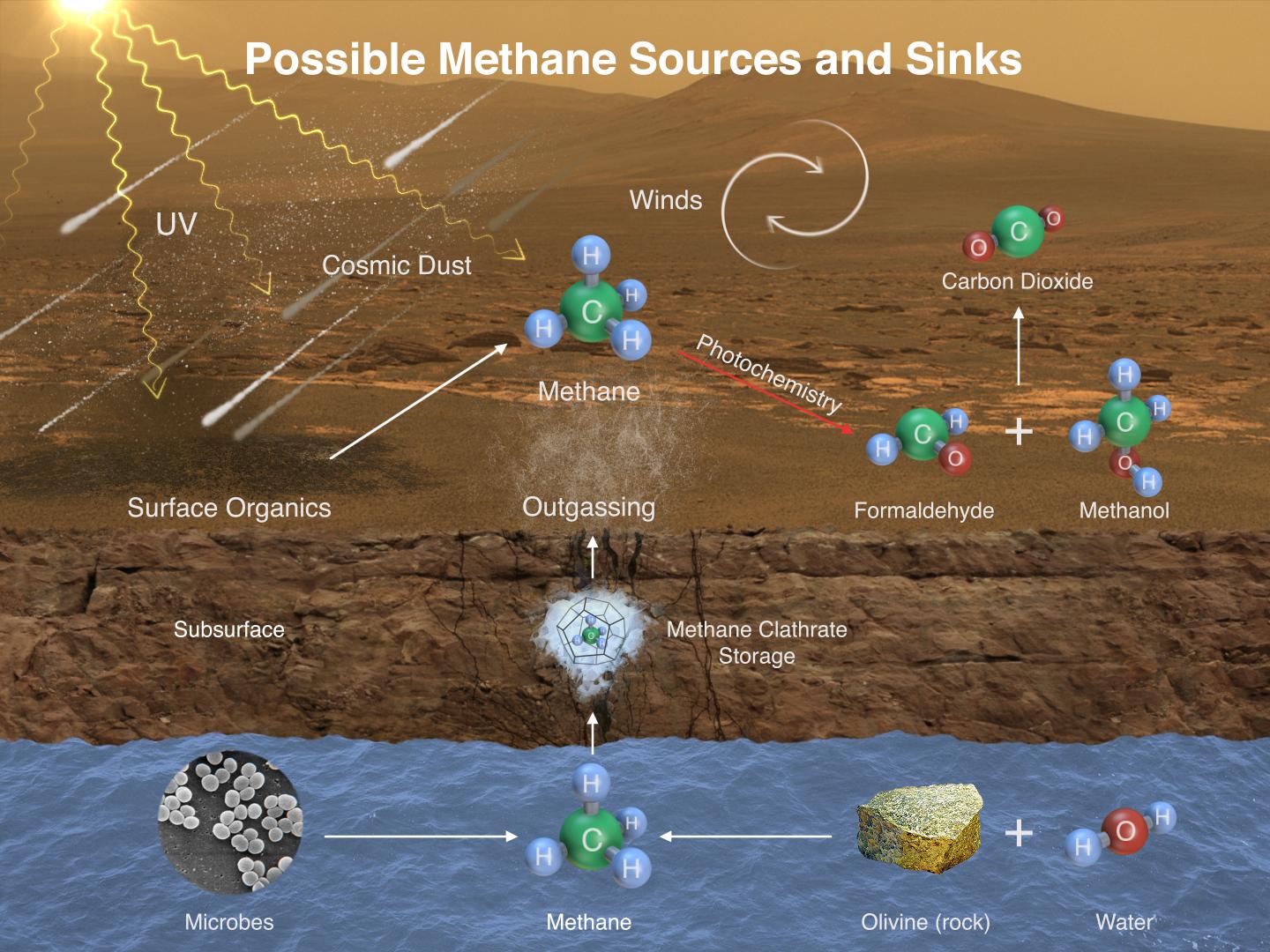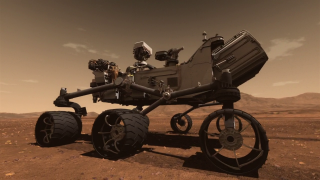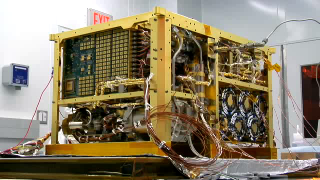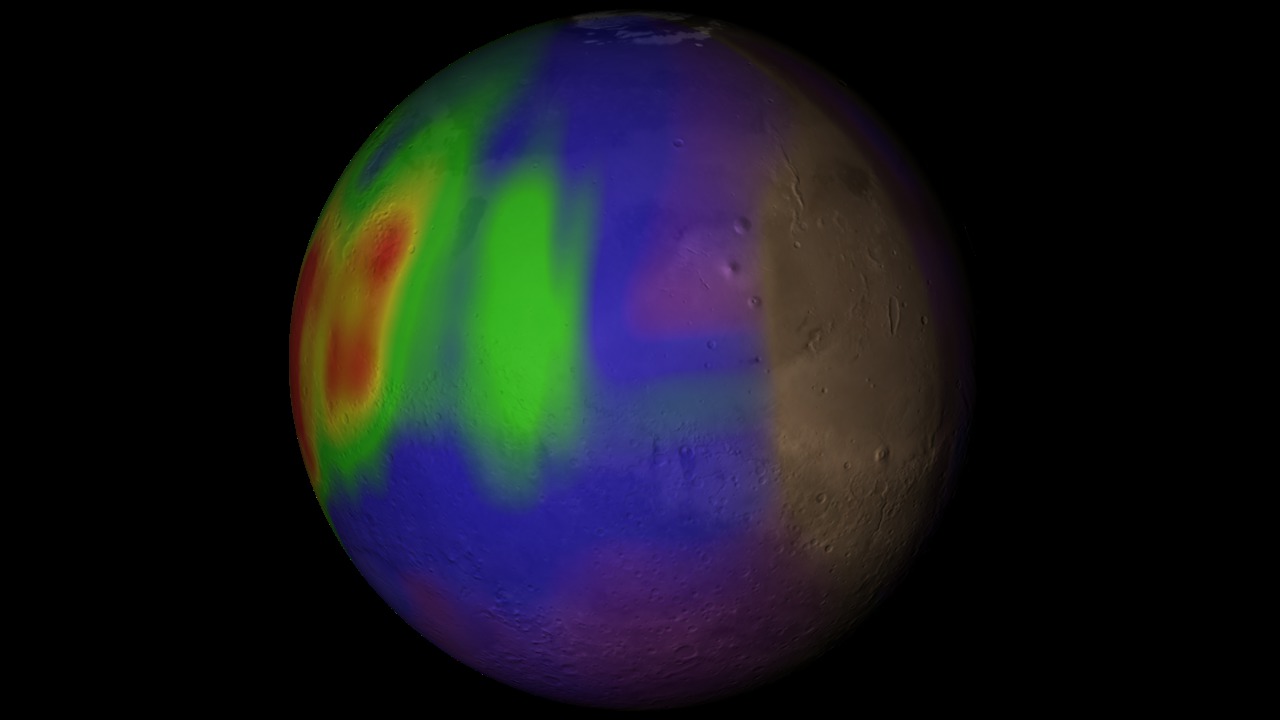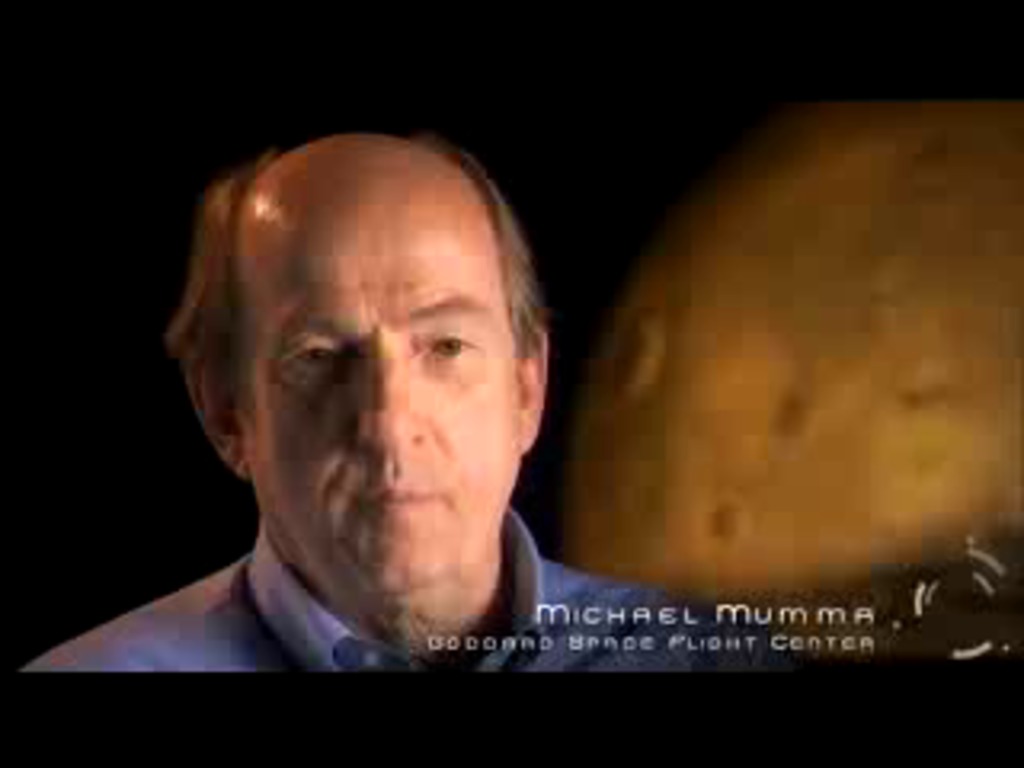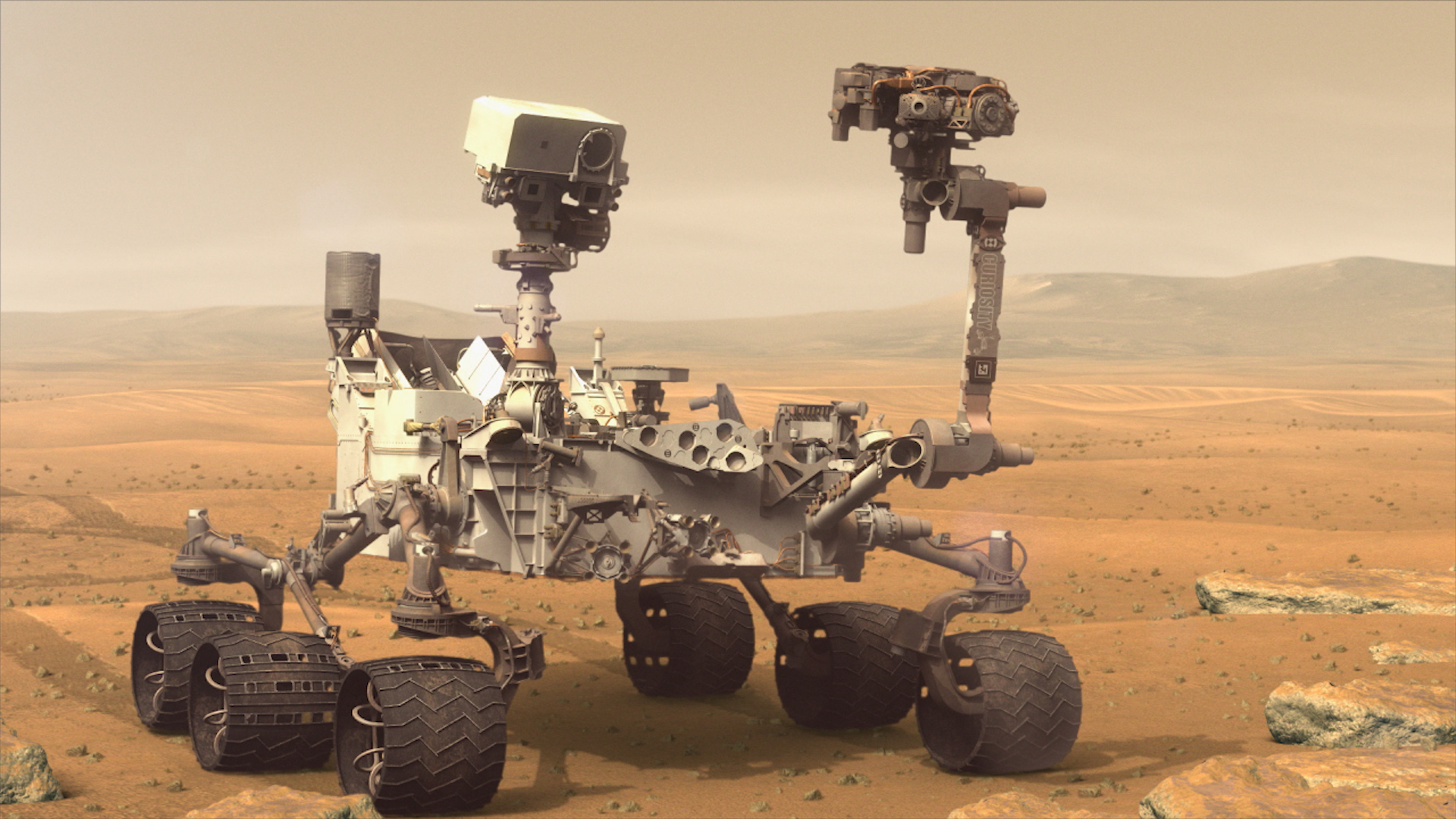Ancient Organics Discovered on Mars - Broadcast Graphics
NASA-TV graphics illustrating Curiosity's findings on Mars, broadcast on June 7, 2018 from Goddard Space Flight Center. All clips are formatted in 1280x720 or higher resolution. Learn more about this discovery.

MOLECULE
Curiosity has discovered ancient organic molecules in Gale Crater using its SAM instrument.
Credit: NASA's Goddard Space Flight Center

SEASONAL
Curiosity has detected seasonal changes in methane at Gale Crater using its SAM instrument.
Credit: NASA/JPL-Caltech
THIOPHENE
SAM detected the organosulfur compound thiophene by analyzing its mass spectrum.
MACROMOLECULE
The small hydrocarbons discovered on Mars are thought to be part of larger macromolecules.
AIR INTAKES
Intake valves on the side of Curiosity allow SAM to ingest Martian air for analysis.

TLS
Curiosity detected atmospheric methane with SAM's Tunable Laser Spectrometer (TLS).
TOUR
A panorama around Gale Crater, the Curiosity rover's location on Mars.
ROVER ARM
Curiosity moves its arm to drill a sample of a Martian rock.

GALE CRATER
A panorama of Gale Crater, taken by the Curiosity rover on Mars.
SAM ACTION
This animation shows the SAM instrument in action.

CRATER DRY
Present-day Gale Crater, with Curiosity's landing site indicated.

CRATER WET
Gale Crater was the site of a lake on ancient Mars.

SAM UNCOVERED
The Sample Analysis at Mars instrument (SAM) was built at Goddard Space Flight Center.

SAM INSTALL
Technicians integrate SAM into the Curiosity rover.

HOLES
SAM detected ancient hydrocarbons in the "Mojave 2" target rock.

ROVERS
NASA's Mars 2020 rover and ESA's ExoMars rover will usher in a new era of exploration.
GLOBE
Beauty shot of Mars rotating.
URL
Slate with NASA's Mars Exploration Program website and social media information.
For More Information
See NASA.gov
Credits
Please give credit for this item to:
NASA's Goddard Space Flight Center
-
Scientists
- Jennifer Eigenbrode (NASA/GSFC)
- Paul Mahaffy (NASA/GSFC)
- Chris Webster (JPL)
- Ashwin Vasavada (NASA/JPL CalTech)
-
Producers
- Aries Keck (ADNET Systems, Inc.)
- Dan Gallagher (USRA)
-
Director
- Rich Melnick (KBR Wyle Services, LLC)
-
Editor
- Dan Gallagher (USRA)
-
Animators
- Walt Feimer (KBR Wyle Services, LLC)
- Lisa Poje (Freelance)
- Josh Masters (USRA)
- Brian Monroe (USRA)
-
Project support
- Pat Kennedy (KBR Wyle Services, LLC)
-
Support
- Aaron E. Lepsch (ADNET Systems, Inc.)
Missions
This page is related to the following missions:Release date
This page was originally published on Thursday, June 7, 2018.
This page was last updated on Monday, January 6, 2025 at 1:33 AM EST.
